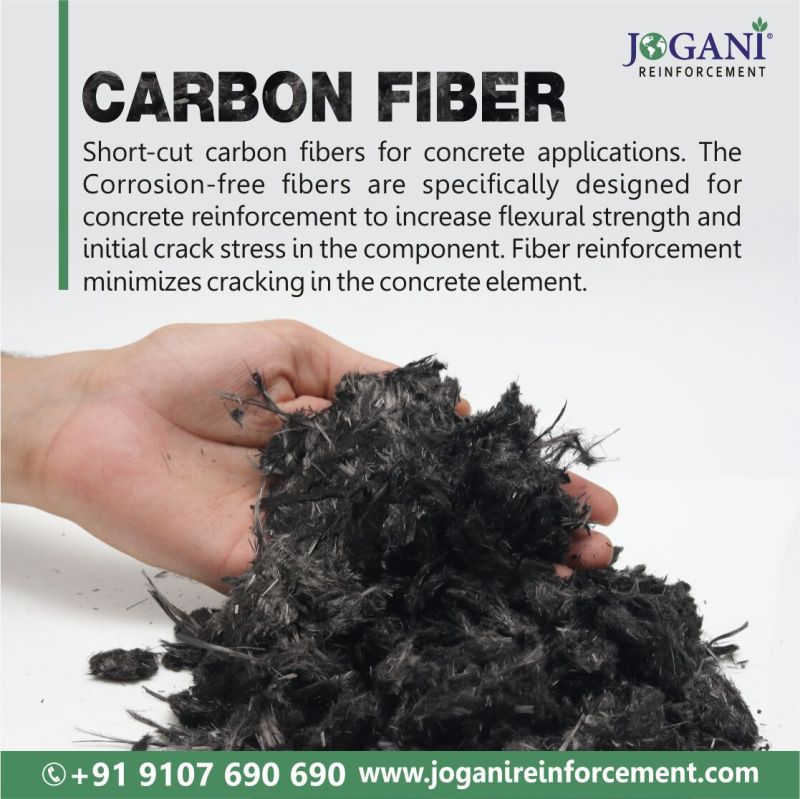Company Information
Ask for more detail from the seller
Contact SupplierJOGANI Carbon Fiber is a high-performance material used in various advanced applications due to its superior strength-to-weight ratio and stiffness. Here’s an overview of JOGANI Carbon Fiber:
JOGANI Carbon FiberDescription:JOGANI Carbon Fiber consists of thin, strong crystalline filaments of carbon that are woven into a fabric or used in composite materials. It is known for its high strength, low weight, and rigidity, making it ideal for applications requiring high performance and durability.
Key Features:High Strength-to-Weight Ratio: Carbon fibers have an exceptionally high strength-to-weight ratio compared to traditional materials like steel or aluminum.
Stiffness: Offers high stiffness and rigidity, which enhances the structural integrity of composite materials.
Corrosion Resistance: Carbon fibers are resistant to corrosion and chemical attacks, making them suitable for harsh environments.
Thermal Stability: Maintains structural integrity under a wide range of temperatures.
Electrical Conductivity: Carbon fibers are electrically conductive, which can be advantageous in certain applications.
Aerospace: Used in aircraft and spacecraft components due to its lightweight and high-strength properties, improving fuel efficiency and performance.
Automotive: Employed in high-performance vehicles to reduce weight and increase strength, enhancing acceleration and handling.
Sports Equipment: Utilized in the production of high-performance sports gear, including bicycles, golf clubs, and tennis rackets.
Civil Engineering: Applied in structural reinforcement for bridges, buildings, and infrastructure to improve load-bearing capacity and extend lifespan.
Marine: Used in boat hulls and other marine components to reduce weight and improve durability.
Medical Devices: Incorporated into prosthetics and other medical equipment for its lightweight and strength properties.
Improved Performance: Enhances the performance of products by reducing weight and increasing strength and stiffness.
Longevity: Offers a long service life due to its resistance to wear, fatigue, and corrosion.
Design Flexibility: Allows for innovative designs and shapes due to its versatility and ease of molding.
Efficiency: Reduces overall system weight, leading to improved efficiency in various applications, from transportation to sports.
Processing: Carbon fiber is often used in conjunction with resins (epoxy, polyester, or vinylester) to form composite materials. The fibers are woven into cloths or mats and then impregnated with resin.
Fabrication: Typically involves processes such as lay-up (layering the fiber sheets with resin), curing (hardening the resin), and machining (cutting and shaping the composite material).
Handling: Due to the nature of carbon fibers, it is important to handle them carefully to avoid breakage or damage. Use protective equipment and follow proper safety protocols during handling and fabrication.
Protective Gear: When working with carbon fiber, wear appropriate protective gear, including gloves, masks, and eye protection, to avoid irritation from fine particles and dust.
Ventilation: Ensure adequate ventilation in work areas to minimize exposure to resin fumes and dust.
Storage: Store carbon fiber fabrics in a dry, cool place to prevent damage and degradation.
For specific technical details such as fiber tensile strength, modulus, and density, consult the technical datasheets provided by JOGANI or the supplier. These datasheets will offer detailed information on the performance characteristics and recommended usage of the carbon fiber.
If you need further information or have specific technical queries, reaching out to JOGANI




